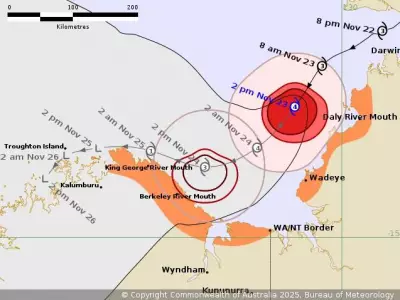
In a quiet corner of Geelong, a dedicated scientist is leading a quiet revolution in how Victoria predicts and prepares for one of nature's most dangerous weather phenomena: thunderstorm asthma.
The Local Hero Behind Life-Saving Forecasts
While most of us check weather apps for rain or sunshine, Dr. Penelope Jones has her eyes fixed on something much smaller yet potentially deadly—pollen grains. Her meticulous work at Geelong's pollen counting station is providing the critical data needed to protect Victorians from thunderstorm asthma events.
What Makes Thunderstorm Asthma So Dangerous?
"Thunderstorm asthma occurs when specific weather conditions combine with high pollen levels," explains Dr. Jones. "During storms, rye grass pollen grains absorb moisture, burst open, and release hundreds of tiny particles that can penetrate deep into lungs, triggering severe asthma attacks even in people who've never experienced asthma before."
The phenomenon gained national attention after the 2016 Melbourne event that claimed ten lives and overwhelmed emergency services. Since then, the race has been on to develop better forecasting systems.
Geelong's Crucial Role in Statewide Safety
Geelong's geographic position makes it the perfect sentinel for detecting pollen movements before they reach Melbourne. Dr. Jones and her team monitor daily pollen levels from October through December—peak rye grass season—feeding real-time data into Victoria's epidemic thunderstorm asthma forecasting system.
"Our local monitoring provides the early warning system that helps protect the entire state," says Dr. Jones. "When we see pollen counts rising here, we know Melbourne could be at risk within hours."
How the Forecasting System Protects Victorians
- Daily pollen monitoring from multiple sites including Geelong
- Advanced weather modelling that predicts storm movements
- Public alert system through emergency services and media
- Hospital preparedness plans activated during high-risk periods
The system has already proven its worth, successfully predicting several high-risk events since its implementation and allowing health services to prepare accordingly.
What This Means for Geelong Residents
For the one in four Geelong residents affected by hay fever, this research isn't just academic—it's personal protection. The local data helps people understand when they need to take extra precautions, such as staying indoors during high-risk periods or ensuring they have necessary medications on hand.
"Knowledge is power when it comes to thunderstorm asthma," Dr. Jones emphasizes. "By understanding the risks and having reliable forecasts, people can take simple steps to protect themselves and their families."
As climate change potentially extends pollen seasons and alters weather patterns, this Geelong-based research becomes increasingly vital—proving that sometimes, the biggest protections come from paying attention to the smallest details.





